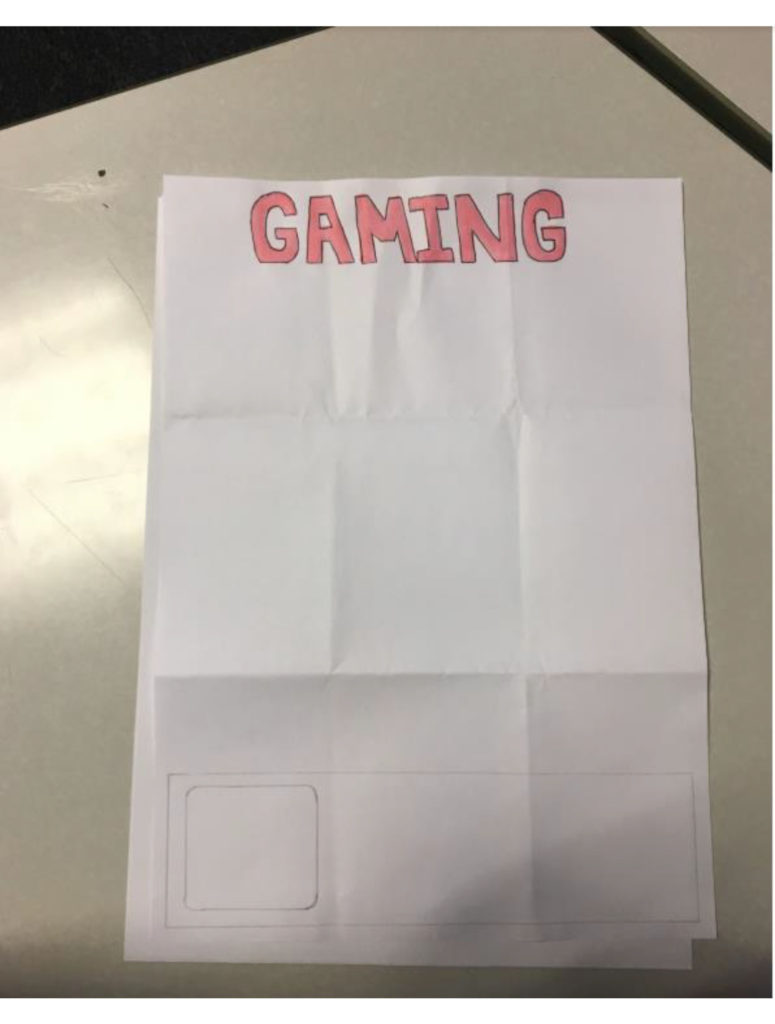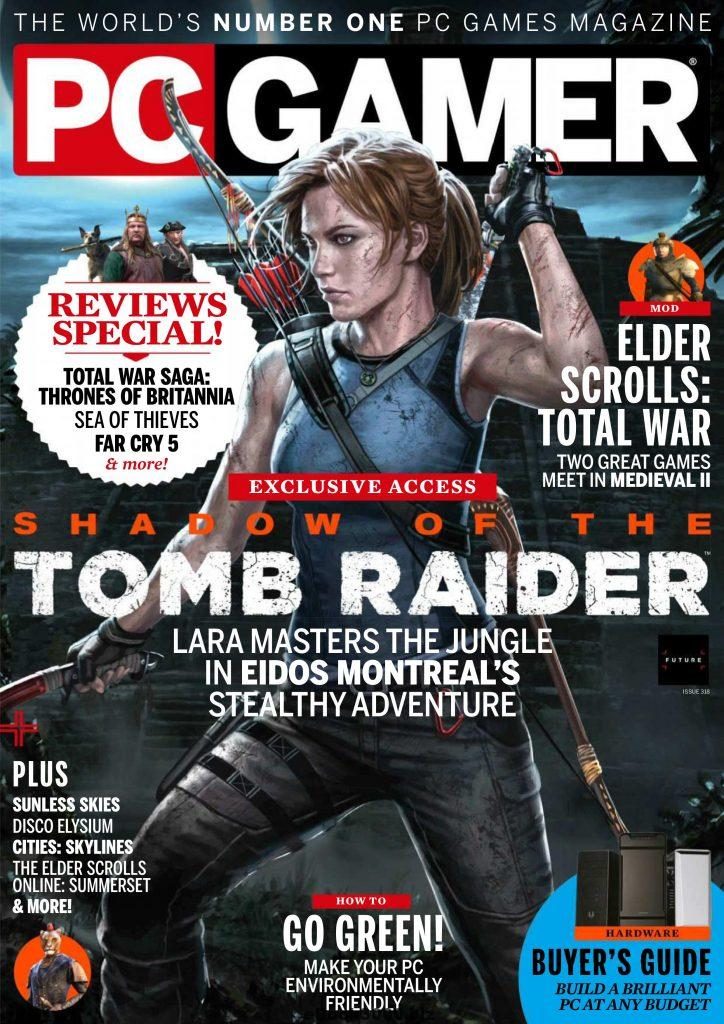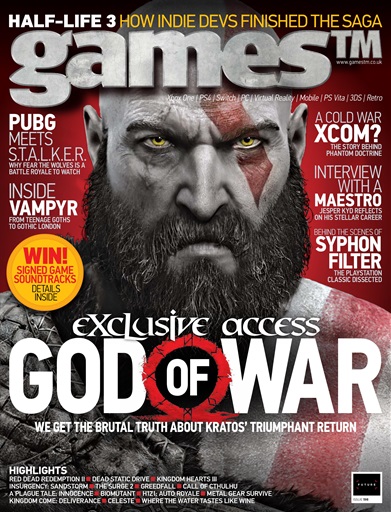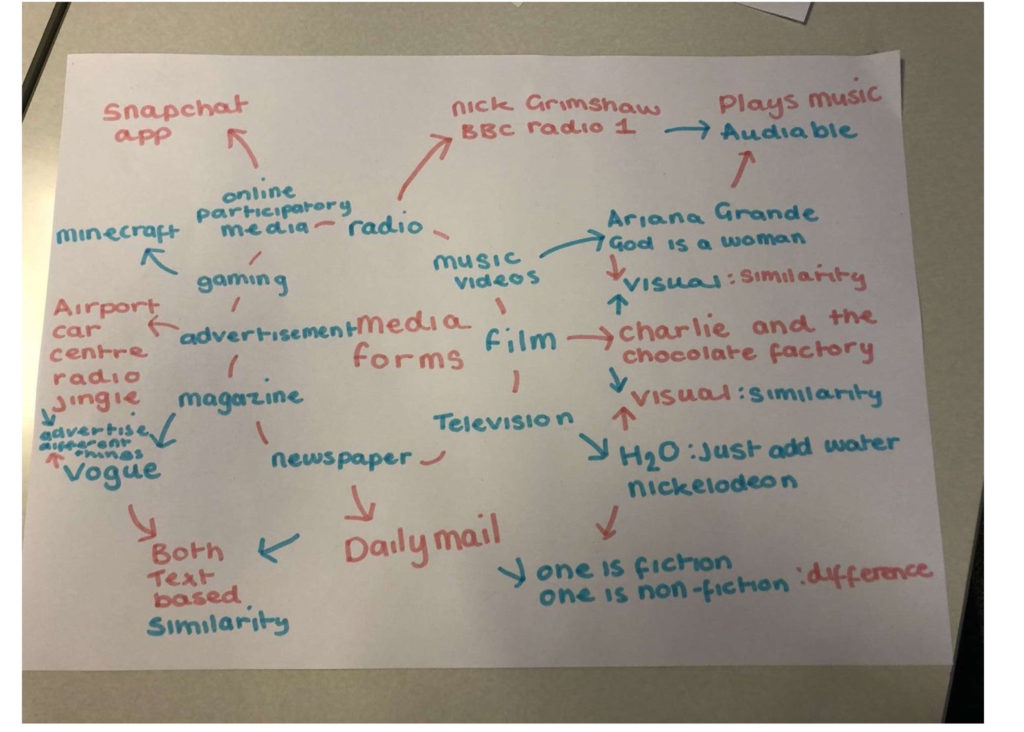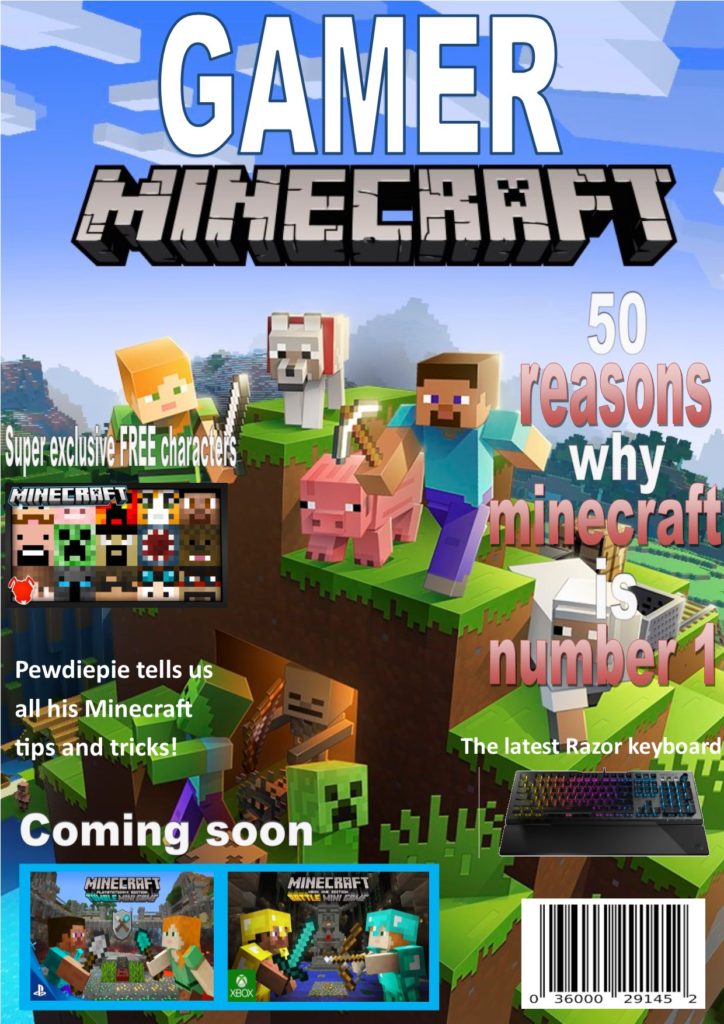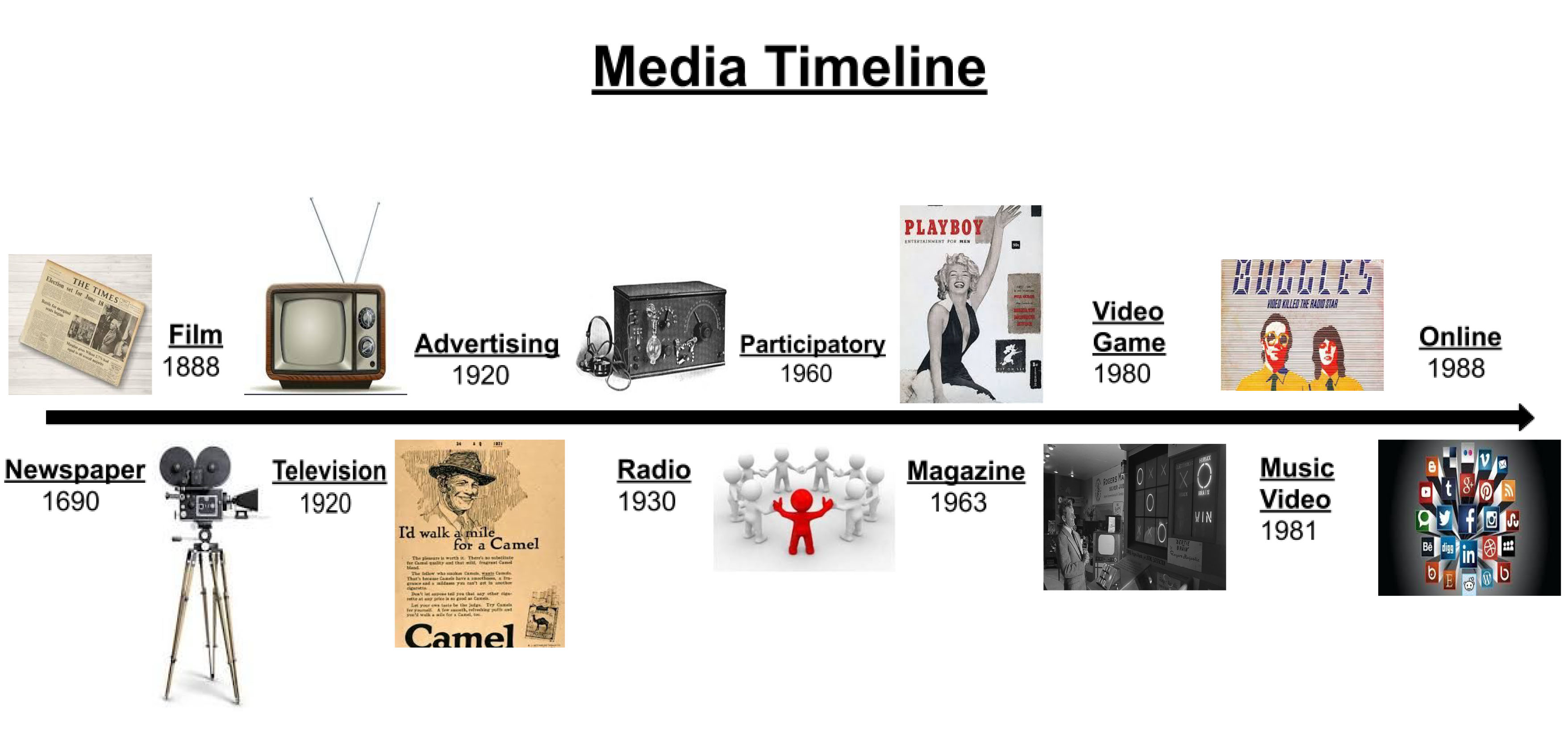For my magazine cover I have decided to create a magazine aimed at young teenage boys preferably aged 11-13. My ideal consumer is that age, it’s a male who can speak English, is in a wealthy family and gets enough pocket money every week to have enough left to buy my magazine each week, he’s very interested in gaming and would like to get better, he has no siblings therefore has a lot of time to himself and can dedicate it to gaming and learning and gaining new gaming skills.
I decided to make the main colour theme of my magazine to be red and blue as they’re complementary colours and therefore the contrast makes my magazine stand out and catches the eye of the consumer. Blue is also the most popular favourite colour amongst young boys so I thought this would make them like the magazine even more.
I made my title bold and big and used a block-like font which was quite simple and easy to read because I wanted my magazine to be clear and easy to understand without the trouble of reading fancy fonts; however I did add texture to my title so that it did draw some attention. I used the basic words ‘ how to game’ because i wanted the magazine title to be straight to the point so that my young audience knows exactly whats within the magazine and doesn’t get bored by too many words on the front page.
I have made one big main image in the middle and I tried to make a child friendly character with yet again the popular blue colour so that the young boys would be interested in playing the game. The blue contrasts the red and makes the character stand out and I’ve left white spaces around it because I don’t want my magazine to be too crowded and I’ve got my layout inspiration from a PC gamer magazine.
Around the sides I have added stickers and interesting facts and information about the magazine. My magazine has hard lines around the boarder and I have overlapped my headings on them because I wanted to bring them forward so that my reader instantly spots them and their importance is emphasised. I have used descriptive words such as ‘deadly, exclusive, free and new’ so that the reader is more prone to buy my magazine because they feel as if they’re gaining rare and exciting things from reading my magazine. Also the word ‘new’ would make parents more likely to buy the magazine for their sons since they’ll feel like they’re getting their moneys worth. Lastly. I used pronouns so that my reader feels as if my magazine is directed towards them and so that they feel like they’re part of something and included when reading this magazine.
My inspiration magazines
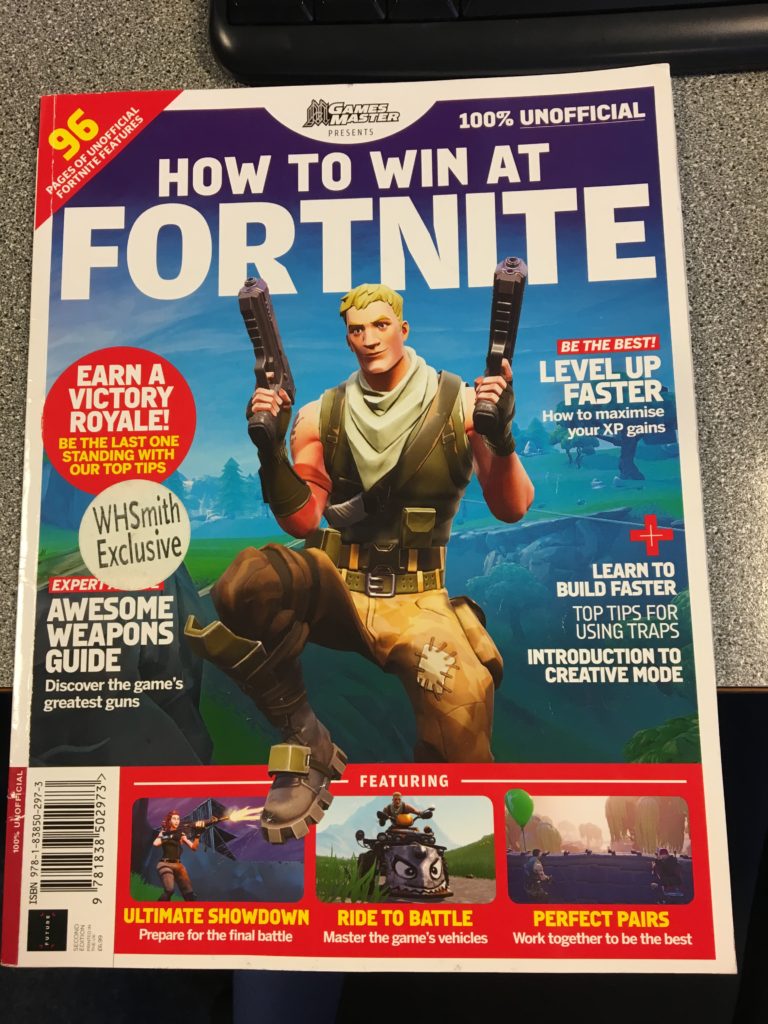


Representation- My character follows dominant ideology and is reactionary because my main character is a male who is stereo typically the brave hero who saves the day.
Audience theory
Dominant- these are the people who agree with what my magazine is saying and they believe that gaming is fun. This would probably be younger males who enjoy gaming.
Op-positional- These are the people who completely disagree with my magazine and they think gaming sucks for example this could be adults or elderly people.
Negotiating- these are the people who are in the middle, they don’t think gaming is amazing but they also don’t hate it. This could be younger girls or boys who haven’t gamed before, these people are the people I’m trying to appeal to because they’re the ones who you want to persuade onto your side.



